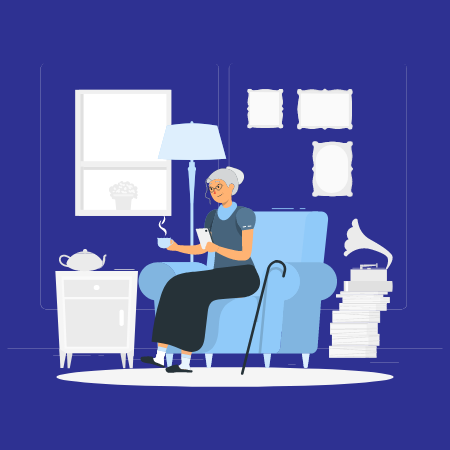
Start with online patient check-in
Healthcare owners are always in doubt when it comes to integrating technology with booking appointment online or practice management in general. According to research, Millennial and Gen Z consumers prefer to use the internet to schedule appointments, speak with doctors, get prescriptions renewed, view their test results, and more. These patients are at ease using technology, and they want it to have a bigger impact on how they receive medical care.
On the other hand, healthcare professionals frequently have serious concerns about how willing and able older patients will be to adopt new medical technologies. The general perception is that people 65 and older are reluctant to use technology. They must feel uncomfortable using digital healthcare tools because they didn't grow up with smartphones or the internet.
That’s a frightening prospect for providers: If they bring in new technologies, older patients may find them too unfamiliar or overwhelming, which could create barriers to their care.
Contrary to popular belief, older adults enjoy using technology and want more online patient check-in and digital care management options. Age-related preferences for tools like mobile check-in, self-scheduling, and online payments were discovered in a recent study of more than 4,000 patients. In fact, most older adults would opt for a digital-first experience that puts them in control if given the choice.
Here are four ways that technology can help you provide older people with better healthcare:
1. Technology can improve the rapport between patients and doctors.
People need to see their doctors more frequently as they age.
By proactively addressing older patients' age-related health risks and concerns, technology can assist providers in having more meaningful conversations with older patients. For instance, providing older adults with online patient check-in tools enables them to respond to private health questions whenever and wherever they feel most at ease—even prior to their visit. Providers can spend more time building supportive relationships with patients when they are aware of their needs in advance. Better health outcomes and more fruitful patient-provider interactions are the end results.
2. Using technology, older adults' financial needs can be met.
The biggest obstacle to receiving care for many elderly patients is cost.
Healthcare costs were cited as the biggest financial concern for retirees and those nearing retirement in a recent Edward Jones survey. In addition, a Commonwealth Fund report from October 2021 found that 1 in 12 older adults had delayed or skipped care because of financial concerns.
Providers must give patients flexible payment options in order to reduce this issue. All patients, including those on fixed incomes or with high-deductible insurance plans, can better manage their finances with the help of digital tools like online payments and automated payment plans.
Even better, older adults favor online payment options. According to a survey, 52% of patients 65 and older would probably pay their medical bills online in 2022 if given the option, and 6% said they would think about switching providers for that convenience alone.
3. Technology provides older adults with adaptable ways to communicate with their providers.
Today, patients of all ages—including seniors—expect to communicate digitally with their doctors.
In a survey of patients 65 and older, 75% said they like communicating with their doctors through digital means like emails, texts, and patient portals. In fact, 34% of people said that when choosing a doctor, it is a "must have."
The primary cause? It's simpler. 72% of people aged 70 and older own a smartphone, and 88% of them use it every day, according to AARP research. Due to this, a lot of healthcare professionals are using tools like two-way text messaging to communicate with patients more quickly and to keep up with their technological expectations even after they leave the exam room.
Unconvinced by texting? Think about email. 67% of people aged 70 and older, according to AARP research, use email on a smartphone or tablet at least once per week. Patients of all generations can feel secure knowing that a healthcare provider is always available to speak with them, no matter where they are, when providers can communicate digitally in real time.
4. The speed and convenience that older adults demand is provided by technology.
Healthcare isn't typically known for being agile from the patient's perspective, but technology is changing that perception.
According to a survey, 55% of adults 65 and older prefer to visit doctors who offer online check-in, citing speed (54%), convenience (57%) and less waiting time (62%) as their top value drivers. The top justifications given by older adults for booking an appointment online or paying for medical services digitally in the previous 12 months included speed and convenience.
That's good news for businesses trying to operate as efficiently as possible. Just like younger generations, older adults are adaptable, forward-thinking, and unafraid to try new things. Healthcare providers can better engage older adults in their care, respond to their needs more quickly, and improve their health outcomes by using technology to streamline the care experience for older adults.
